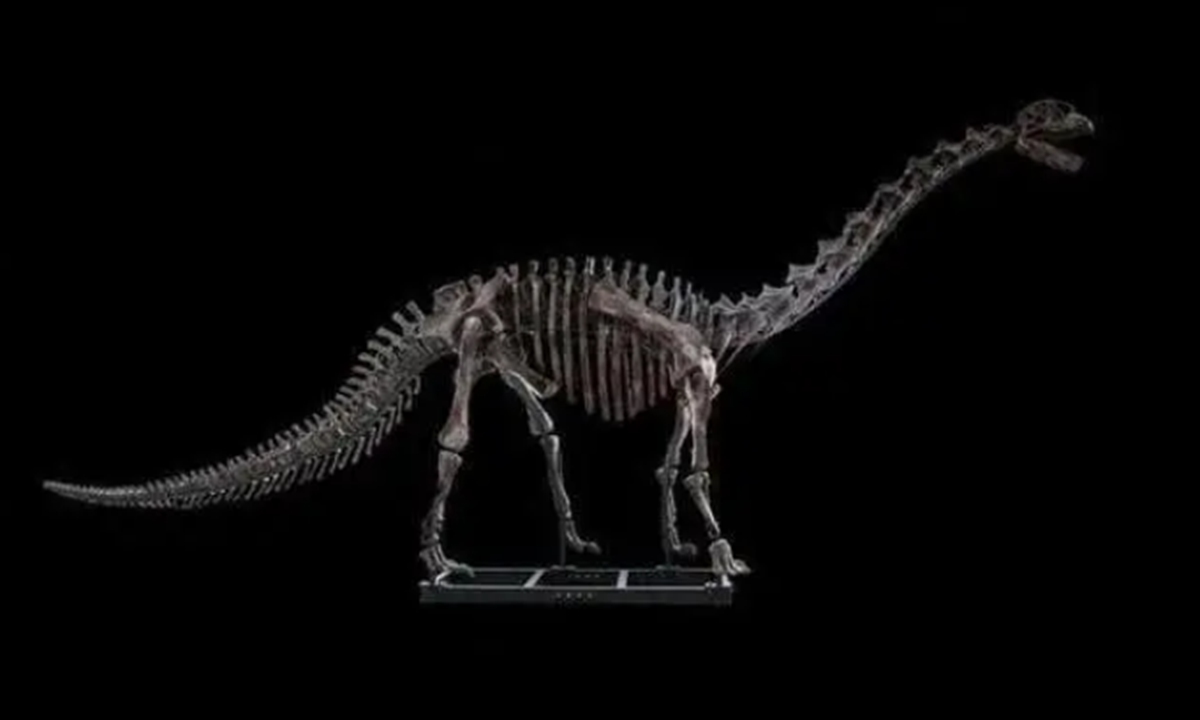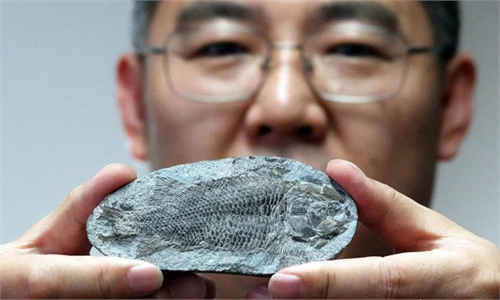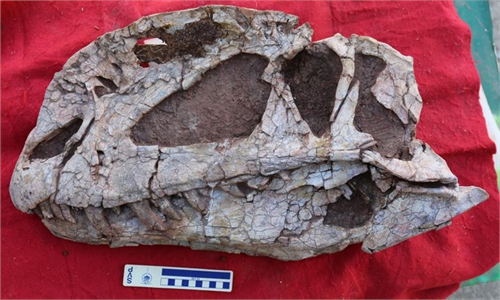ARTS / CULTURE & LEISURE
Oldest sauropod dinosaur fossil discovered in SW China
The fossil of a sauropod dinosaur, about 11 meters in length, dating back to around 166 million years ago was recently discovered in Yunyang county, Southwest China's Chongqing Municipality.
The dinosaur species is called Yuzhoulong qurenensis. Belonging to the sauropod family, it existed during the Middle Jurassic period, which also makes it the oldest sauropod dinosaur ever found in the region.

A herbivore like all other sauropods, Yuzhoulong qurenensis was a four-legged terrestrial dinosaur whose back reached about 5 meters in height. The fossil specimen was a sub-adult.
Yuzhoulong qurenensis is considered "petite" compared with other members in the sauropod family, which have "long necks and tails and gigantic bodies ranging around 30 meters in length," Li Yaping, a Chongqing based dinosaur expert, told the Global Times.
"The newly discovered species provides significant insights into the evolutionary traits and the diversity of the sauropod dinosaur species," Li said. The expert also noted that more than 160 million years ago, the location where the new species was discovered was likely a lush environment with humid temperatures and vast quantities of vegetation.
The fossil of Yuzhoulong qurenensis was discovered at a renowned geological site in the local area called the Yunyang Pu'an Dinosaur Fossil Wall.
The site, which is 150 meters in length and nearly 10 meters in height, is the world's largest Jurassic fossil wall. More than 5,000 pieces of dinosaur remains, including skulls, tooth and limb bones, have been discovered in the wall.
The site is known not only for its quantity of dinosaur remains, but also for its diversity, which makes it a library of different dinosaurs such as "ornithopods, sauropods and stegosaurs," said Xu Xing, an expert at the Institute of Vertebrate Paleontology and Paleoanthropology of the Chinese Academy of Science.
Including the major "fossil wall" and the fossil of Yuzhoulong qurenensis, Yunyang has long been blessed with incredibly rich dinosaur fossils. Experts surmised that the reason for this was due to the floods, heavy rain storms and debris flows that occurred in the region 180 million to 160 million years ago and which buried the remains of numerous dinosaurs that later fossilized.
The rich dinosaur resources in the region have also led to a boom in cultural tourism.
In 2022, construction began on a geological park featuring the local "fossil wall." The site covers an area of more than 6,600 square meters. The center will integrate functions like an entertainment hall, dinosaur museum and academic center, and is scheduled to open in September.
The dinosaur species is called Yuzhoulong qurenensis. Belonging to the sauropod family, it existed during the Middle Jurassic period, which also makes it the oldest sauropod dinosaur ever found in the region.

Photo: screenshot
A herbivore like all other sauropods, Yuzhoulong qurenensis was a four-legged terrestrial dinosaur whose back reached about 5 meters in height. The fossil specimen was a sub-adult.
Yuzhoulong qurenensis is considered "petite" compared with other members in the sauropod family, which have "long necks and tails and gigantic bodies ranging around 30 meters in length," Li Yaping, a Chongqing based dinosaur expert, told the Global Times.
"The newly discovered species provides significant insights into the evolutionary traits and the diversity of the sauropod dinosaur species," Li said. The expert also noted that more than 160 million years ago, the location where the new species was discovered was likely a lush environment with humid temperatures and vast quantities of vegetation.
The fossil of Yuzhoulong qurenensis was discovered at a renowned geological site in the local area called the Yunyang Pu'an Dinosaur Fossil Wall.
The site, which is 150 meters in length and nearly 10 meters in height, is the world's largest Jurassic fossil wall. More than 5,000 pieces of dinosaur remains, including skulls, tooth and limb bones, have been discovered in the wall.
The site is known not only for its quantity of dinosaur remains, but also for its diversity, which makes it a library of different dinosaurs such as "ornithopods, sauropods and stegosaurs," said Xu Xing, an expert at the Institute of Vertebrate Paleontology and Paleoanthropology of the Chinese Academy of Science.
Including the major "fossil wall" and the fossil of Yuzhoulong qurenensis, Yunyang has long been blessed with incredibly rich dinosaur fossils. Experts surmised that the reason for this was due to the floods, heavy rain storms and debris flows that occurred in the region 180 million to 160 million years ago and which buried the remains of numerous dinosaurs that later fossilized.
The rich dinosaur resources in the region have also led to a boom in cultural tourism.
In 2022, construction began on a geological park featuring the local "fossil wall." The site covers an area of more than 6,600 square meters. The center will integrate functions like an entertainment hall, dinosaur museum and academic center, and is scheduled to open in September.



